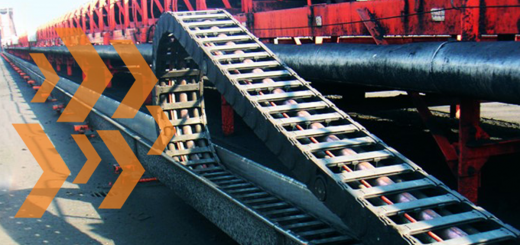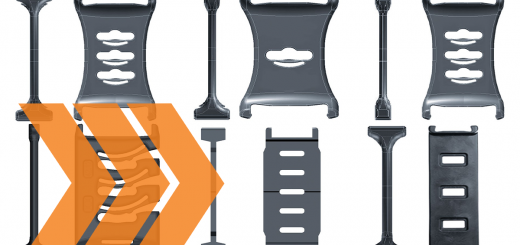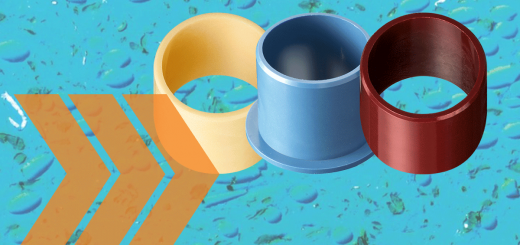Custom Manufacturing: Which method is best for you?
By Jared Worth
Now more than ever companies are turning towards prototyping and small part orders to create highly specific, specially tailored components for their customers. However, choosing a method to manufacture these components can be a daunting process. Injection molding, 3D printing and machining are the most popular, but even among these there are numerous sub-categories and use cases that can influence the “correct” choice for a particular situation. Read on to learn more about these custom manufacturing methods and which situations are ideal for each.
Mass Production
Before diving into custom manufacturing methods, it’s important to understand why you would want to use them instead of higher quantity mass production methods. Common mass production methods require a high up-front cost for molds or tooling that require large order quantities to recoup. Similarly, such large order quantities significantly limit the options available for material types, possible dimensions, or other specifications. This may not be an issue if the component you need is fairly simple or common, but issues arise as soon as specifications outside the norm are required.
Additive Manufacturing
Additive manufacturing (another name for 3D printing) is easily the most varied manufacturing process available. Under the umbrella of additive manufacturing, there are numerous types of 3D printing methods such as fused-deposition modeling (FDM), selective laser sintering (SLS), digital light processing (DLP), and more. Each method is ideal for different sets of requirements, but there are certain common characteristics among each type of printing.
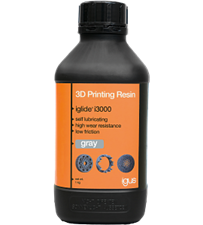
DLP: DLP printing creates parts by curing entire layers of resin at a single time, significantly speeding up the printing process compared to stereolithography, which also uses resin for printing. DLP is also ideal for achieving extremely high levels of detail as well as internal channels within a component, and printed components have a smooth surface without the need for additional processing.
One of the key issues with DLP printing is the complexity of the printing process relative to other methods. Special care also needs to be taken to avoid skin contact with the printing resin, which means protective equipment is a necessity. Components also need to be “washed” with isopropyl alcohol to remove any uncured resin.
SLS: SLS printing offers speeds even faster than DLP, since multiple parts can be printed during the same build process — meaning it’s one of the most cost-effective 3D printing methods as well. SLS also provides high strength and tight tolerances relative to other 3D printing methods.
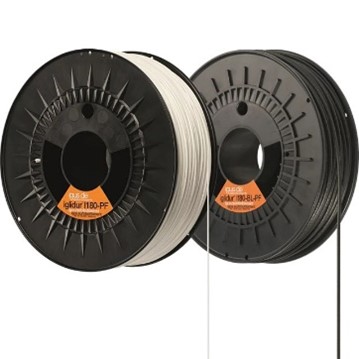
FDM: Being one of, if not the, most common method of 3D printing, FDM printers are some of the most accessible whether you’re looking into 3D printing services or using your own in-house printer. FDM printing also has the unique capability of multi-material printing — though the process can prove difficult if using a single nozzle.
Inter-layer stability is a bigger concern with FDM printing than other methods, and FDM tolerances can only reach +/- 0.2mm which prevents it from being viable for high-precision components.
Injection Molding
Injection molding is a much simpler process overall than additive manufacturing. Regardless of the material, component structure or number of components being made, there’s little to no variation in how they’re produced. Injection molding is best for large order quantities (often >5,000) due to the speed in which components can be produced, but geometries are limited to the mold being used, limiting customization.
One exception to the above rule is the Print2Mold service from igus®. Custom 3D printed molds are created based on customer requirements, and then the custom parts are injection molded to reduce production time by about 70% and costs by about 80%. This is the ideal solution for large quantities of a single custom component that isn’t overly complex.
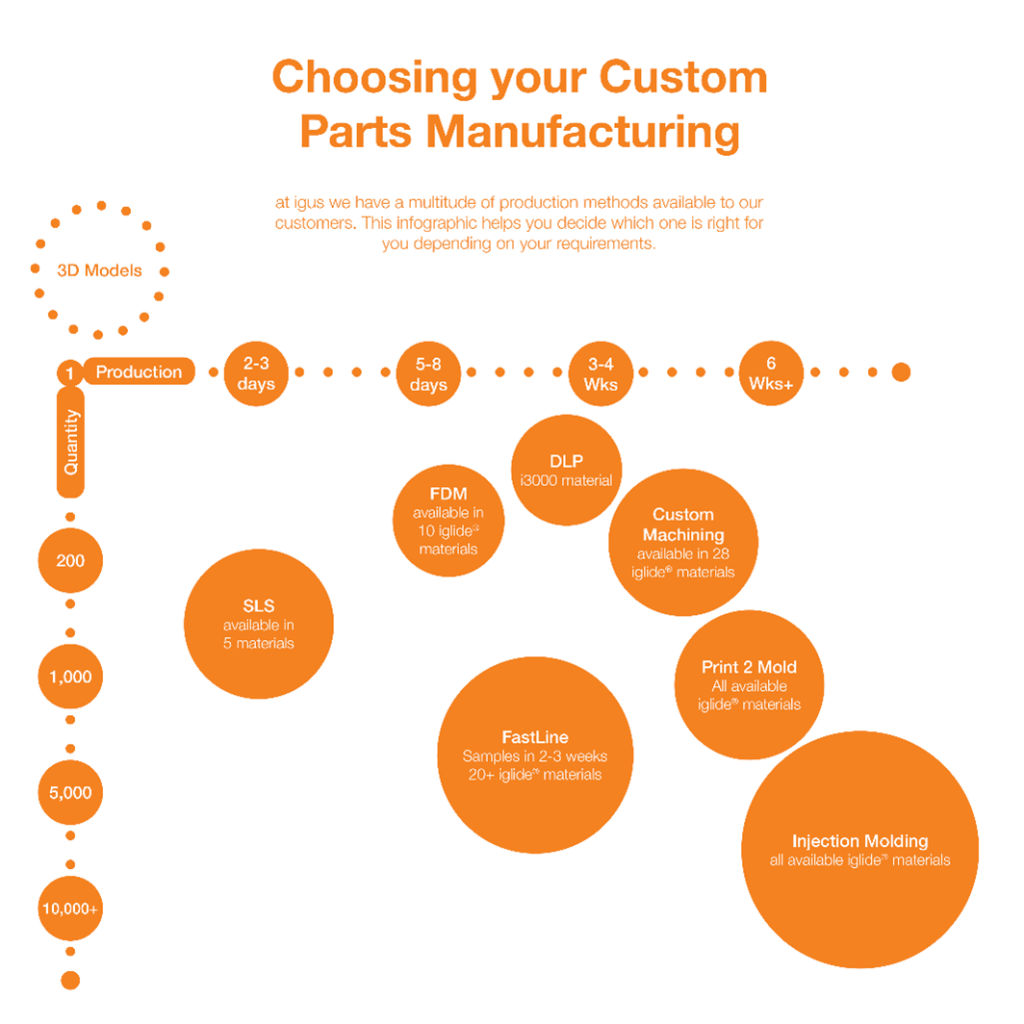
Similarly, the igus FastLine service allows customers to order customized bearings, bushings and more, and receive the parts within 10-12 business days. Customers can individually select the material used and specific bearing dimensions, and even add custom bevels if desired.
Subtractive Manufacturing
Subtractive manufacturing (machining) is slower than 3D printing across the board due to time-consuming setup, fixture, programming, etc. and slower than injection molding for serial production quantities. So what advantages does it offer?
The primary answer is the extremely high level of accuracy & repeatability and tight tolerances that can be achieved by machining that other methods can’t compete with. The tightest tolerance machining can reach is +/- 0.001”, compared to roughly 0.039” for 3D printing and 0.005” for injection molding. The difference between these three may seem miniscule, but it makes a world of difference in critical applications such as those in the aerospace industry.

Conclusion
Regardless of your specific needs when it comes to custom manufacturing, a process is available to get the job done. The biggest challenge is knowing which method to use, but hopefully this blog has helped provide a solution regardless of component requirements and order quantity.
To learn more about igus’ custom manufacturing methods, visit our web page! If you have further questions about the custom parts services available from igus, contact an expert.

